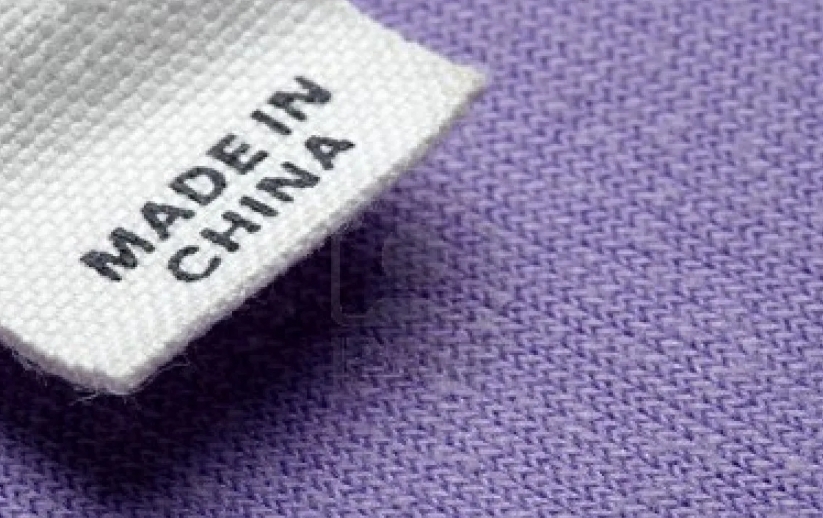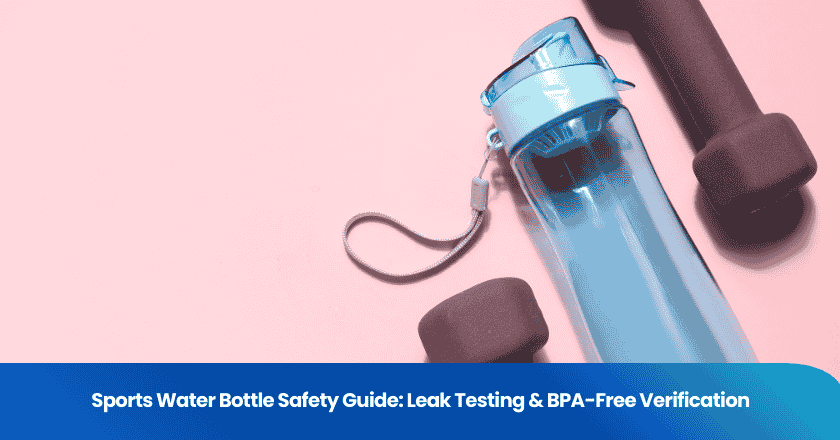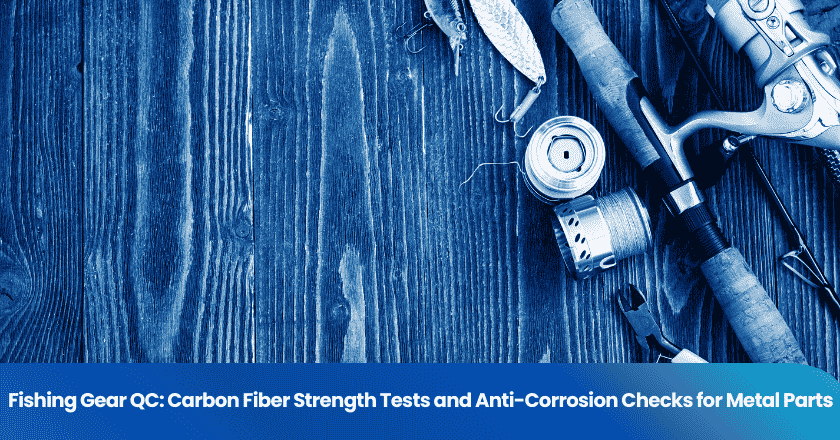
Sourcing in China is an effective way for global companies to obtain high-quality products and reduce costs, and is an important bridge to enter the huge Chinese market.
With the transformation from 'Made in China' to 'Created in China', China provides a rich selection of goods, containing innovative technology and efficient supply chain management capabilities.
Currently, this journey is not without challenges, language barriers, cultural differences, quality control, and regulatory compliance issues may all become obstacles.
To ensure a successful sourcing trip, adequate preparation, meticulous research, and flexible strategies are crucial. Additionally, finding a reliable sourcing supplier is also a popular choice, welcome to read 《How to Effectively Collaborate with China Product Sourcing Agents》.
Sourcing in China: Research and Identify Suppliers
When sourcing in China, in-depth market research and reliable supplier identification are key steps to successful procurement.
The following is a detailed explanation of this process:
Understanding the market
Analyze product requirements
Clearly define the type, specifications, quantity, and quality requirements of the products to be sourced in China. Follow-up with precise supplier positioning and negotiation. Through market research, understand the demand, price trends, consumer preferences, and other information of the target products in China and the global market, providing a basis for procurement decisions.
Identify key participants and trends
In-depth research on the industry of the target product, identifying the main participants in the industry, including leading companies, emerging forces, and potential competitors. Pay attention to industry development trends, including technological innovation, policy changes, consumer behavior, etc., in order to adjust sourcing strategies in a timely manner.
Searching for reliable suppliers
Online platforms and directories
Utilizing B2B platforms: such as Alibaba, Global Resources Network, etc., these platforms provide a large amount of supplier information and product catalogs for quick screening and comparison.
Use professional directories: Consult industry professional directories, such as 'China Supplier Directory', to obtain more accurate supplier information.
Trade exhibition for sourcing in china
Events such as the Canton Fair and the Shanghai Import Expo, which gather numerous domestic and international suppliers, are excellent opportunities for face-to-face communication, understanding products, and establishing connections. After the exhibition, promptly organize the collected materials and maintain contact with interested suppliers for further in-depth communication.
Assess supplier reputation
Check certificates and licenses
Check the supplier's business license, tax registration certificate, organization code certificate and other basic documents to ensure their legal operation. Pay attention to whether the supplier has obtained ISO certification, CE certification and other international or industry-recognized quality management system certifications in order to assess their product quality and management level.
Reading reviews and recommendations
Check the customer reviews of suppliers on B2B platforms, social media, and other channels to understand the shopping experience and satisfaction of other buyers. Consult experts, peers, or associations within the industry to obtain recommendations and opinions on suppliers, so as to more comprehensively assess their credibility.
Successful sourcing in china requires in-depth market research and meticulous supplier identification. By clarifying product requirements, understanding market trends, using online platforms and trade exhibitions to find suppliers, and rigorously evaluating the reputation of suppliers, a solid foundation can be laid for subsequent procurement activities.
How to negotiate and place an order?
To successfully source in China, the following key aspects need to be considered during negotiations and placing orders:
Prepare for negotiations
Chinese business culture emphasizes relationships and networking. Before negotiations, it is important to understand and respect Chinese business etiquette and customs. Many Chinese suppliers have the ability to communicate in English, but ensuring smooth communication still requires attention to language differences. If necessary, consider hiring a translator or using online translation tools to assist.
Before negotiations, the purchaser should clarify their sourcing requirements, including product specifications, quantity, price, delivery date and other key terms, so as to have a clear objective during negotiations. Based on the sourcing requirements and market research results, formulate practical negotiation strategies, including expected goals, acceptable ranges, and the bottom line for concessions.
Effective negotiation strategies
At the beginning of the negotiation, try to establish personal connections with suppliers, such as understanding each other's background through relaxed conversations, to enhance mutual understanding and trust. Express the willingness for long-term cooperation, showcase the purchasing party's strength and credibility, and boost the suppliers' confidence in cooperation.
Discuss each clause in the procurement contract one by one to ensure that both parties have no objections to the content of the clauses. During the negotiation process, maintain flexibility and adjust your position in a timely manner according to reasonable suggestions put forward by the other party, in order to reach an agreement that is acceptable to both parties. Pay attention to the details in the contract terms, such as payment methods, liability for breach of contract, etc., to avoid disputes in the later stage.
Custom contract and order placement
Professional legal personnel or internal legal departments are responsible for drafting procurement contracts to ensure that the contract terms are rigorous and legal. The contract should clearly stipulate clearly key terms such as product specifications, quantity, price, delivery date, quality standards, acceptance methods, after-sales service, and liability for breach of contract.
Before placing an official order, carefully verify all the information in the order, including product name, specifications, quantity, price, delivery address, etc., to ensure accuracy. Confirm the supplier's production capacity and delivery capability to ensure the order can be completed on time and with quality.
Additional Notes
During the negotiation and order placement process, keep communication with suppliers open and timely resolve any issues and doubts that arise. Pay attention to the price dynamics and supply situation of the target product in the Chinese market, so as to adjust the sourcing strategy in a timely manner. Assess and manage possible risks, such as exchange rate risk, logistics risk, etc., and formulate corresponding countermeasures.
In order to successfully source in China, it is necessary to make full preparations, apply effective negotiation strategies, carefully draft and confirm the content of the contract during negotiations and placing orders, while maintaining smooth communication with suppliers and paying attention to market dynamics and risk management.
Validation and Quality Control
In the process of successful sourcing in China, verification and quality control are key links to ensure that the purchased products meet expected standards, maintain corporate reputation, and consumer trust. Here are several important points to note in terms of verification and quality control:
Conduct supplier audits
On-site inspection
Arrange professionals to conduct on-site inspections of suppliers' factories, observing their production environment, equipment condition, production processes, and quality control measures. Through on-site inspections, one can more intuitively understand the production capacity and management level of the suppliers. During the inspection process, focus should be placed on the supplier's quality control procedures, sources of raw materials, finished product inspection, and other aspects to ensure that the supplier strictly adheres to relevant standards and norms during the production process.
Third-party verification service
Entrust a third-party verification agency (such as SGS, BV, etc.) to conduct qualification reviews and product inspections on suppliers. These professional institutions have rich experience and advanced technical means, and can provide enterprises with objective and accurate verification results. Combining third-party verification reports and on-site inspection results, a comprehensive evaluation of suppliers is conducted to ensure they have stable and reliable product quality and production capacity.
Implement quality control measures
Establish quality standards
Based on the characteristics of the products to be sourced in China and market demand, establish clear quality standards. These standards should include key elements such as product specifications, performance indicators, and inspection methods to ensure that the purchased products meet the expected quality requirements. When developing quality standards, factors such as international or industry standards, customer requirements, and historical procurement experience can be referenced to ensure the reasonableness and applicability of the quality standards.
Regular inspection and testing
Strict incoming inspection is conducted on purchased products to ensure they meet quality standards. During the inspection process, key indicators such as appearance, size, and performance of the products should be focused on, and non-conforming products should be promptly returned or require suppliers to make corrections. Process monitoring is implemented during the supplier's production process, ensuring that suppliers strictly follow quality standards through regular inspections and tests. This helps to promptly identify and correct problems in the production process to prevent non-conforming products from entering the market. Establishing long-term cooperative relationships with suppliers and jointly focusing on continuous improvement of product quality. Through regular quality reviews and feedback mechanisms, potential quality issues are promptly identified and resolved, continuously improving product quality and supplier management levels.
In the process of successful sourcing in China, verification and quality control are important links to ensure the stable and reliable quality of the purchased products. By conducting supplier audits and implementing strict quality control measures, companies can effectively reduce procurement risks, improve product quality and competitiveness. At the same time, establishing long-term cooperative relationships and good communication mechanisms with suppliers is also an important guarantee to achieve this goal.
Logistics and Transportation Considerations
After sourcing in China, handling logistics and shipping involves multiple aspects such as choosing transportation methods, managing customs and regulations, as well as tracking and delivery.
The following are the detailed processing steps and considerations:
Choose the correct mode of transportation
Air Freight and Ocean Freight
Air freight: Applicable to situations where goods are urgent or have high timeliness requirements. Air freight is fast, but the cost is relatively high. If the goods are small in size, light in weight and high in value, or if the market demand is urgent, air freight may be a better choice.
Sea freight: Suitable for large quantities of goods that are not urgently needed. Sea freight costs are relatively low, but the transportation time is longer. For bulky and heavy goods, sea freight is usually a more economical choice.
Cost and time considerations
When choosing a mode of transportation, it is necessary to consider both cost and time factors. Although sea transportation is low in cost, it may be delayed due to weather, port congestion, etc.; although air transportation is fast, it is more expensive. Therefore, a reasonable choice needs to be made based on factors such as the nature, quantity, delivery time, and budget of the goods.
Managing customs and regulations
Understanding import tariffs
Before exporting goods from China to the destination country, it is necessary to understand the import tariff policies of that country. The amount of tariffs depends on factors such as the type, value, and origin of the goods. Accurate tariff information can be obtained by consulting the customs websites of relevant countries or consulting professional customs brokerage firms.
Ensure compliance with regulations
In addition to tariffs, it is also necessary to ensure compliance with other relevant regulations of the destination country, such as import licenses, product standards, inspection and quarantine requirements, etc. Before exporting goods, relevant regulatory requirements should be carefully checked, and all necessary documents and certificates should be prepared.
Tracking and delivery
Monitor the shipping progress
After the goods are shipped, close attention should be paid to the shipping progress. By maintaining close contact with logistics service providers, one can stay updated on the real-time status of the goods and their estimated arrival time. Some logistics service providers offer online tracking systems, which make it convenient to check the real-time location of the goods.
Dealing with delays and issues
If there are delays or issues with the goods during transportation, it is necessary to promptly contact the logistics service provider to understand the specific situation and seek a solution. For delays caused by force majeure factors (such as weather, political events, etc.), it is necessary to communicate with the recipient and explain the reasons; for delays or losses caused by the logistics service provider's responsibility, one should hold them accountable and claim compensation according to the terms of the contract.
Additional Notes
Packaging and marking: The packaging of the goods should be strong, moisture-proof, shock-proof, and in compliance with international transportation standards. At the same time, the packaging of the goods should be clearly marked with information such as the destination address, name of the goods, quantity, etc., to avoid confusion and errors.
Insurance: For goods with higher value, it is recommended to purchase cargo transportation insurance to prevent accidental loss or damage during transportation.
Document preparation: Prepare all necessary documents and certificates according to international trade practices and the requirements of the destination country, such as commercial invoices, packing lists, bills of lading, insurance certificates, import licenses, etc.
Handling the logistics and shipping after sourcing in China requires considering multiple factors and taking a series of measures to ensure the goods arrive safely and on time at their destination.
Successful sourcing in China involves various aspects such as market research, supplier selection, negotiation skills, quality control, and logistics management. Each step needs to be meticulous, and due diligence is particularly crucial, as it can help avoid risks and ensure the smooth progress of procurement activities.
Encourage every purchaser to flexibly apply the above strategies, combine with the actual situation, continuously adjust and optimize, and finally achieve sourcing success in the vibrant market of China.

Smart Sourcing Content Team
Article by Smart Sourcing Content Team
The Smart Sourcing Content Team is committed to delivering high-quality, easy-to-understand information that helps our audience navigate the complexities of global sourcing. Our team of writers has extensive experience in producing articles across various fields such as procurement, supply chain management, market trends, and industry best practices. We specialize in sectors like apparel, textiles, and consumer goods, providing targeted insights to help businesses in these industries optimize their sourcing strategies and stay competitive.
Grow your business with TradeAider Service
Click the button below to directly enter the TradeAider Service System. The simple steps from booking and payment to receiving reports are easy to operate.



